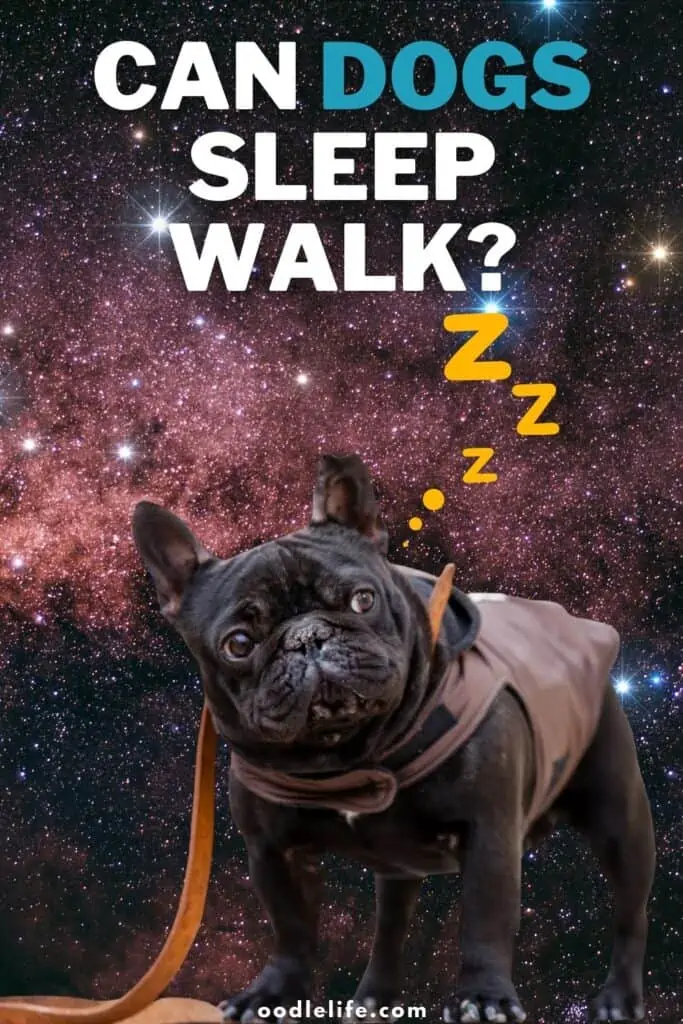Can Dogs Sleep Walk? [How To Tell]
It must be strange to wake up in the middle of the night and find yourself standing up in the middle of the kitchen! Welcome to the world of sleepwalking.
Also known as somnambulism, sleep walking in humans happens when you function physically but remain asleep. Hence, many people that sleepwalk find themselves in a strange situation when they wake.
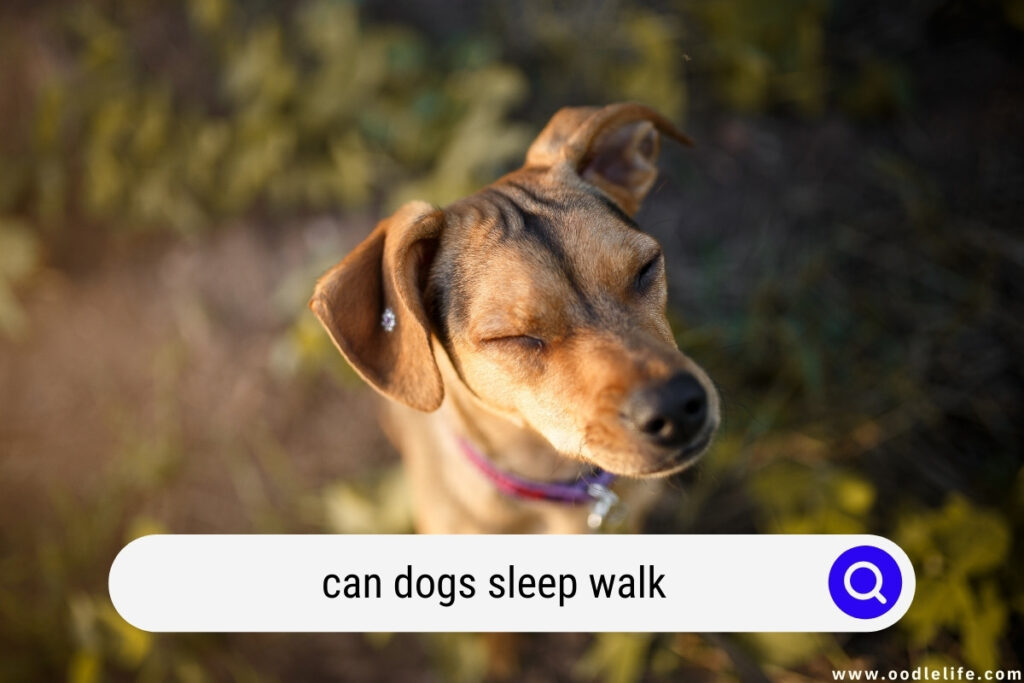
Thankfully, sleepwalking in dogs are a lot less complicated. It usually entails loads of vocalization and plenty of twitchy, active limbs. Dogs sleepwalk too, but not to the same extent as humans.
When dogs have their sleepwalking episodes, it can look like seizures, dreams, or a trance.
One things for sure though; sleepwalking, dreaming, or being in a trance all involve neural activity that affect our canine buddies while they slumber.
Sleepwalking In Humans And Dogs
Dogs can sleepwalk, but not in the same way that humans can. When a human sleepwalks, an observer may be unaware of what is going on because the sleepwalker’s behavior appears “normal.”
They move with seemingly normal psychomotor coordination and frequently perform tasks that they would perform if they were awake.
Dogs, on the other hand, make random, jerky movements while sleeping. Dogs, for example, may paddle their feet as if running, or they may stand and then flop to the ground as they sleep. Overall, their sleepwalking behavior will look and sound incredibly strange.
Sleepwalking in canines refers to a dog’s erratic, jerky movements and twitching that resemble walking or running when they are sleeping.
In this post, we’ll look at the reasons and remedies for sleepwalking in dogs. We’ll also see if dogs growl and sleepwalk at the same time. But first, let’s see what sleepwalking means in the doggy world.
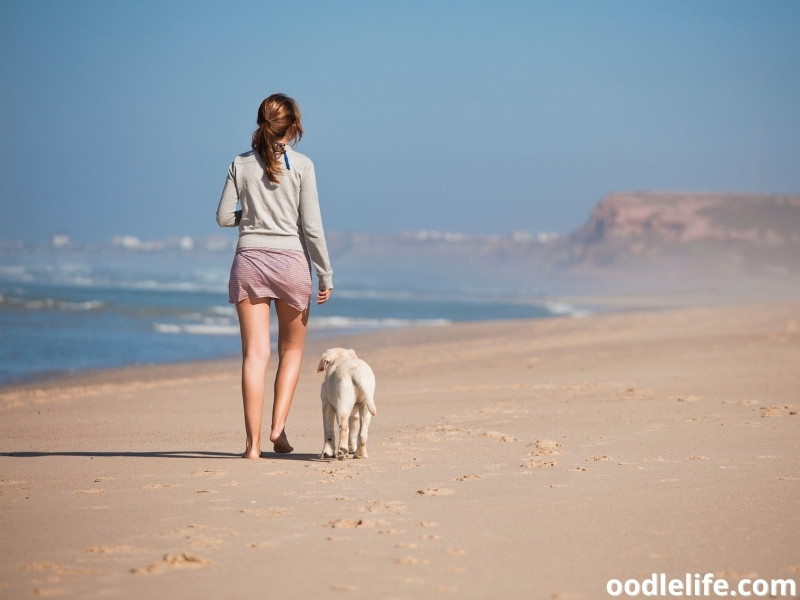
What Is Sleepwalking?
Sleepwalking, also known as somnambulism, is a state of sleep that wanders while a person or animal is asleep. For example, walking is an action or movement that we can only do when we are awake. During sleep, the conscious and unconscious mind and body rest, and all movements except muscle relaxation are temporarily stopped.
This function, however, can be morphed in certain people, resulting in sleepwalking. This sleep disorder affects children more than it does adults.
Climbing out of the window and falling, roaming around the home, or even eating something from the refrigerator are all common accidents that can happen during a sleepwalking episode. Yikes!
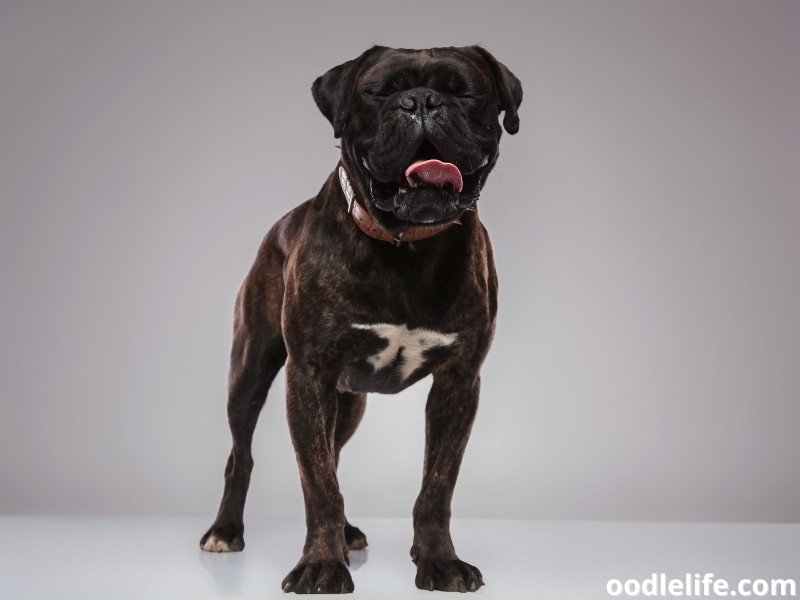
Why Do Dogs Sleepwalk?
Although the causes of sleepwalking are not well understood, lack of sleep and aging are two possibilities.
Sleep disorders such as narcolepsy and cataplexy are frequently caused by a lack of sleep, but it’s unclear if sleepwalking is generated by sleep deprivation.
Dogs, like humans, enter into a stage of sleep called REM, or Rapid Eye Movement. In humans, it happens about 90 minutes after we fall asleep but for dogs, it happens in about 20 minutes.
Like us, our pooches dream during their REM stage of sleep, and their muscles remain relaxed and still. However, in some dogs that have abnormally active REM sleep, they yelp, howl, bite, and snap, all while their legs are twitching a hundred miles an hour.
In comparison to a younger dog, a middle-aged dog is thought to suffer from greater sleep disorders. Senility can cause a different type of sleep disorder that is known as a kind of cognitive dysfunction, similar to dementia in older humans. In this, dogs are fully awake, just confused.
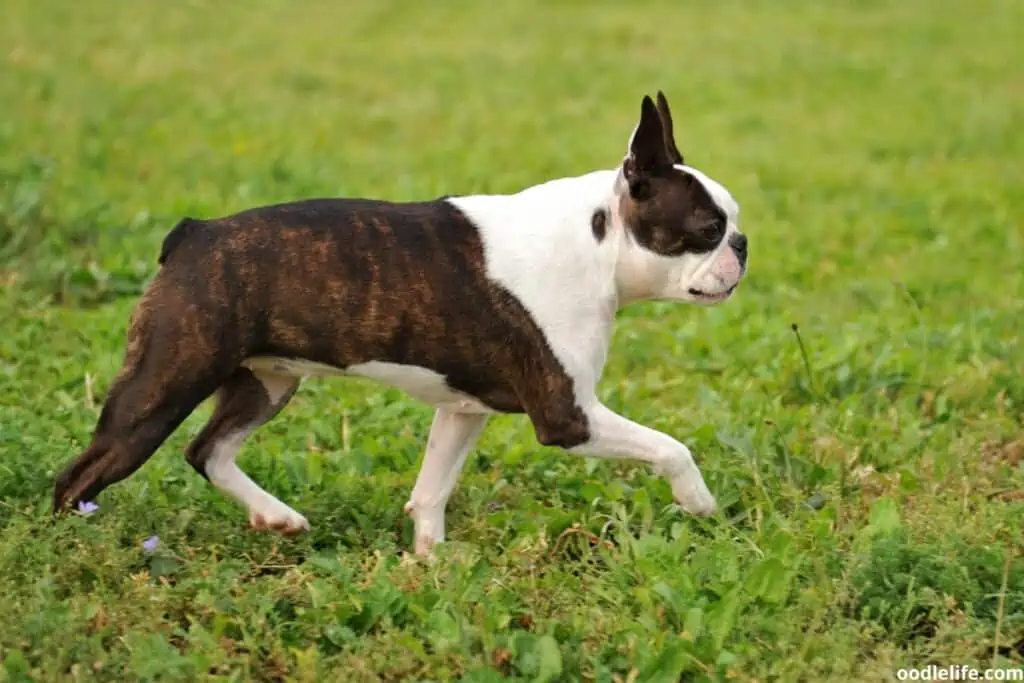
Common Disorders that Get Confused for Sleepwalking
Because dogs do not appear to sleepwalk, most sleepwalking-like activities are most likely caused by medical issues, sleep disorders, or other ailments. Among the most common causes are:
1. Neurological Disorders
If your dog’s brain and neurological system aren’t working properly, he or she may exhibit several unusual behaviors. Even when a dog is fully awake, some neurological problems, such as seizures, might cause him to appear to be sleepwalking. They can also make him pace in circles, lean against a wall, or vocalize for no apparent reason.
Dogs exhibit this kind of bizarre behavior because some neurological conditions can affect your dog’s health. If so, you should evaluate your dog as soon as possible.
That doesn’t mean you have to call the vet every time your dog does something weird or has a vigorous dream. However, if you have strange or regular patterns of behavior, it’s a good idea to see what your vet is saying about the problem.

2. Sleep Disorders
If your dog moves around the house frequently, he might not be sleepwalking, but might have some other type of sleep disorder.
Narcolepsy and cataplexy can also disrupt a dog’s sleep. These health conditions can lead to REM behavior and periodic limb movement disorder. Because dogs do not display the typical behaviors associated with sleepwalking, a sleep problem is more likely, and neurological exams may be required.
Some dogs may also have sleeplessness or narcolepsy. Both of these diseases can produce excessive tiredness throughout the day, as well as abnormal sleep phase patterns. As a result, your dog may look asleep while still awake, leading you to misinterpret his motions as sleepwalking.

3. Cognitive Disorders
Senior dogs need just a little more care than an adult dog in its prime. Some dogs’ cognitive abilities deteriorate as they age, and this might cause them to wander, appear puzzled, or act strangely. Owners may misinterpret such actions as sleepwalking, especially if they occur throughout the night.
There isn’t much that can be done to halt or stop this type of mental deterioration, and it seems to be a natural part of aging in certain dogs. Instead, you’ll have to accept your dog’s new reality and do everything you can to keep him from harming himself or walking away.
It is still necessary to see your veterinarian to check that your dog’s peculiar habits are caused by his senior age and not by another medical issue — you don’t want to neglect a problem that may be corrected.
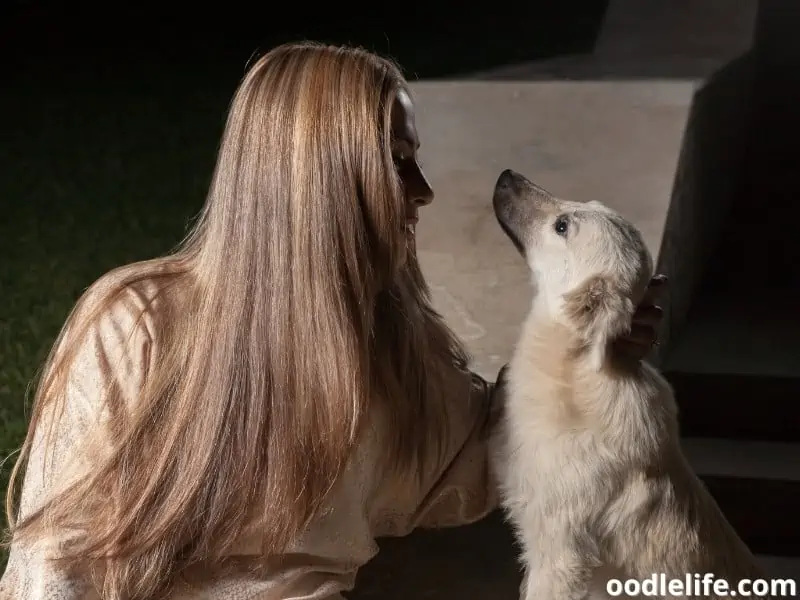
Treatment for Sleepwalking
It has been shown that a high-quality diet greatly aids in the treatment of canine sleep problems. Feed a nutrient-rich food full of healthy components like omega-3 fatty acids, tocopherols, antioxidants, and vitamins. Check with your veterinarian about the various options and try to feed organic whenever possible.
If your dog has a disorder that cannot be cured, only managed, then make sure your home is a safe space for him to do the wandering. You might want to confine him in a certain room without any hazards, or a puppy playpen that can restrict his activity.
If a dog is in deep REM sleep and gets startled, it could be dangerous and your dog might attack or snap. As much as he sounds like he’s in the middle of a very bad dream, it is likely that he is merely chasing a squirrel. Try to avoid suddenly waking him up and let your dog settle on his own.
However, you should consult with your veterinarian to establish the underlying reason for this abnormal behavior, as it might indicate a serious condition. You may even have your pet undergo a neurological examination.

What Should You Do If Your Dog Does Strange Things in His Sleep?
There are some things you should probably do to keep your dog safe, and help your dog spend the night more peacefully.
- Make a nice sleeping area for your dog. Dogs with hip or joint disorders may have difficulty getting comfortable, which can disrupt their sleep patterns. A decent, orthopedic bed can also make your dog feel protected, which can help him sleep well.
- Place your dog’s bed in an out-of-the-way location so he doesn’t damage himself during the night. You don’t want your dog to harm himself by falling down the stairs or bashing into a coffee table.
- Ensure that your dog’s diet is well-balanced. Sleep problems can be caused by nutritional deficiencies, so make sure your dog is consuming the right food.
- Ensure that your dog gets enough activity throughout the day. While exercise can not cure major sleep problems like narcolepsy, it can help people stay awake and develop good sleeping patterns.
- Above all, keep your veterinarian informed. Some sleep problems can endanger your pet’s health and well-being, so if you are ever in doubt, take him to the vet. This allows you to address any underlying issues as soon as possible and not wait for it to escalate.
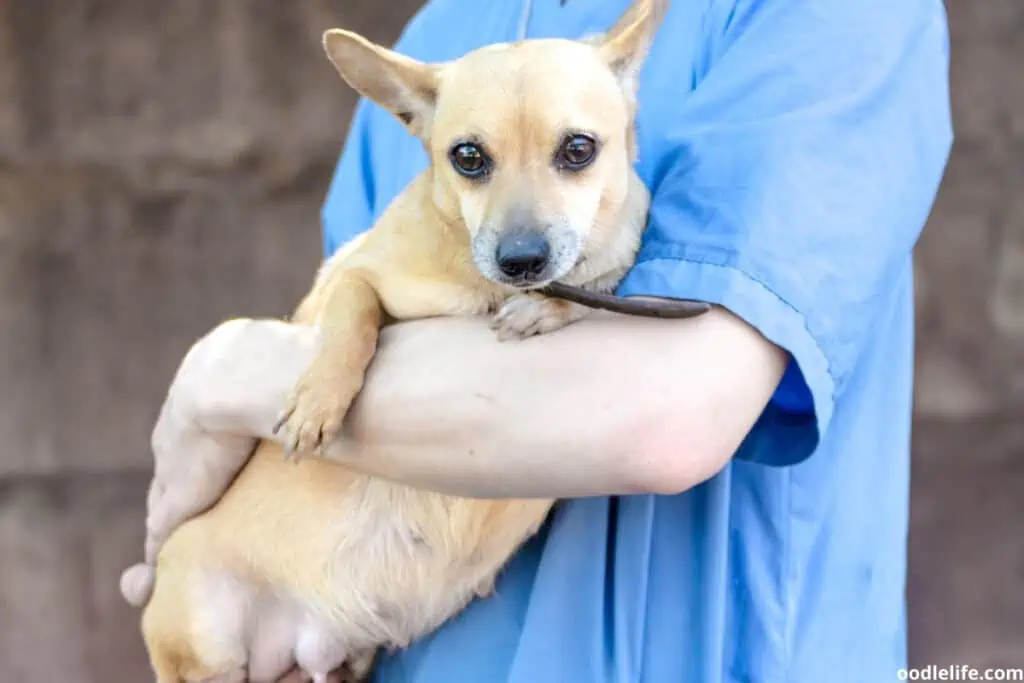
Final Thoughts
If your dog is simply dreaming or sleepwalking, it is best to let the experience play out. It is risky to wake a sleepwalking dog, just as it is with people. You don’t want to give him a rude awakening that might cause him to snap in an instinctive reaction.
If you do have a dog that wanders at night, be sure to dog-proof the sleeping area to prevent him from hurting himself. With some precautions and a whole lotta love, a sleepwalking dog can be as happy as any other dog.
